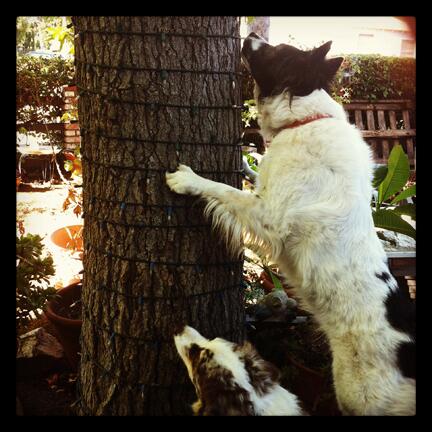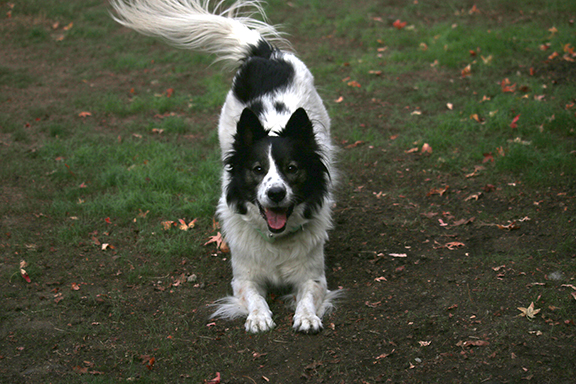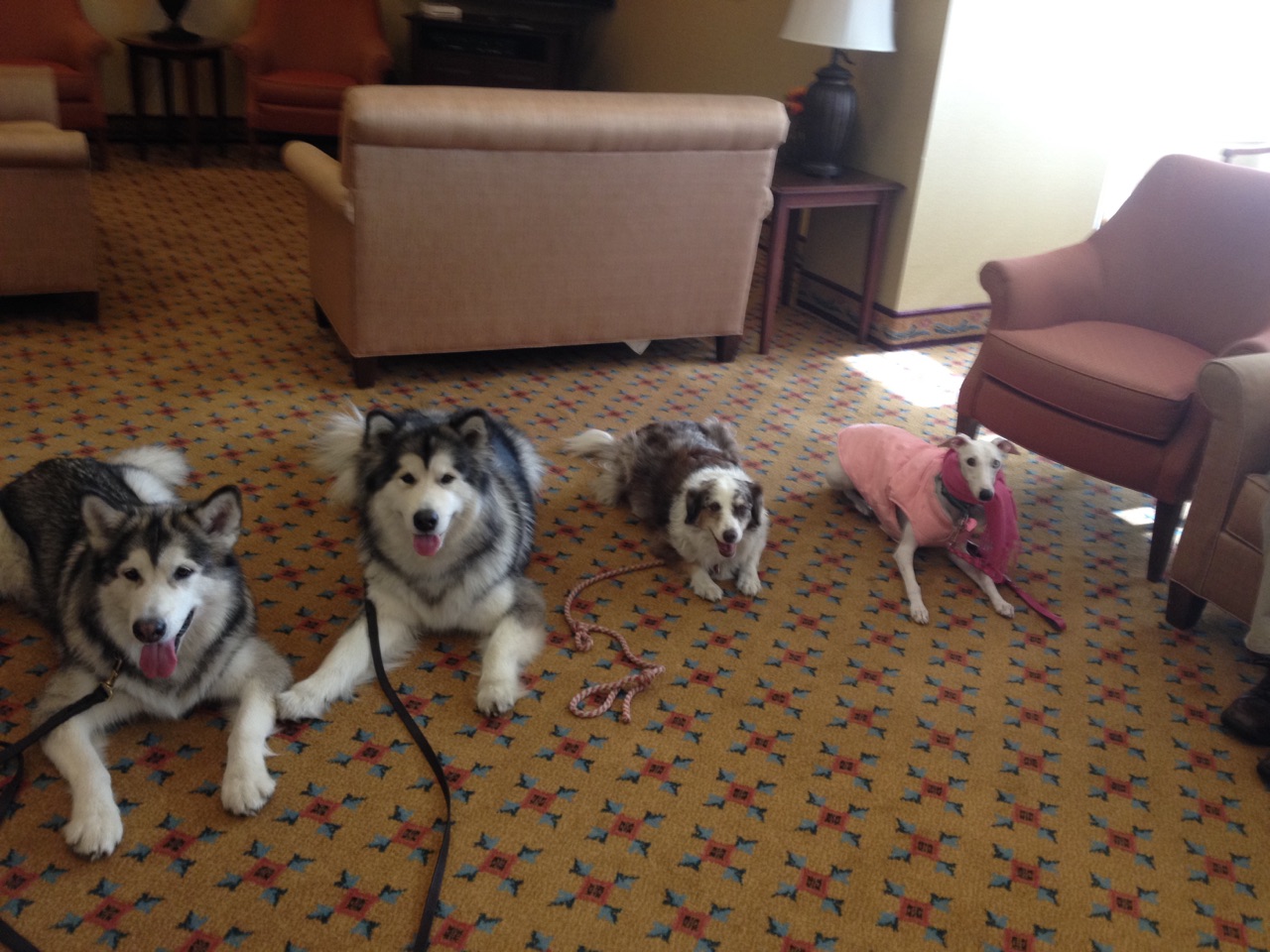
A lot of positive trainers train their own dogs using environmental cues. This means that the human goes about their business and the dog reads the context of the environment and behaves properly. Allowing dogs to think and pay attention, without the human needing to bark directions all the time, is a huge relief for the entire household.
As an example, this morning I was sorting the pile of mail that seems to magically double during the course of a week. I had two bags, one for shredding and one for trash. The trash bag was on the floor. When I took a break I left it there, like a beacon inviting a curious dog to stick their nose in.
The trash bag was in view as I sat on the sofa. Paisley, being the curious, “Oh! Let’s see what’s in here!” kind of dog, wandered over and stuck her nose in, then pulled her nose out and walked away. Party time! “Good girl,” and treats all around. Why? Paisley made a very good choice. She followed her curiosity, I allowed her to follow her curiosity and, curiosity satisfied, she left the bag alone. If she had wanted attention or was frustrated or bored, she could have easily started emptying the contents and scattering them around the room to throw her own party, but she didn’t.
Because Paisley has had positive experiences while interacting with items in her environment, and has been rewarded for behaving properly, it is likely the next time she sees a bag on the floor, (even if it has more enticing contents,) she will leave it alone.
So, what are some environmental cues you can use around the house? Checking out, but not emptying bags is always a good thing. It allows you to bring groceries home without worrying about your dog taking off with that fresh steak. Learning to wait when you open a door is another one. No need to say “Stay” or “Sit,” you just train the proper behavior to happen as you’re opening the door. Other ideas include, food being placed on the dining table means “Go to your mat,” or a doorbell ring means “Go to your crate,” or the sound of the front gate opening means “Come get me.” Picking up socks is my favorite. It never fails that I drop socks as I’m going to do laundry, so the dogs pick them up and bring them to the laundry room for me.
What other ideas do you have for using environmental cues to tell your dog what behavior to do?



